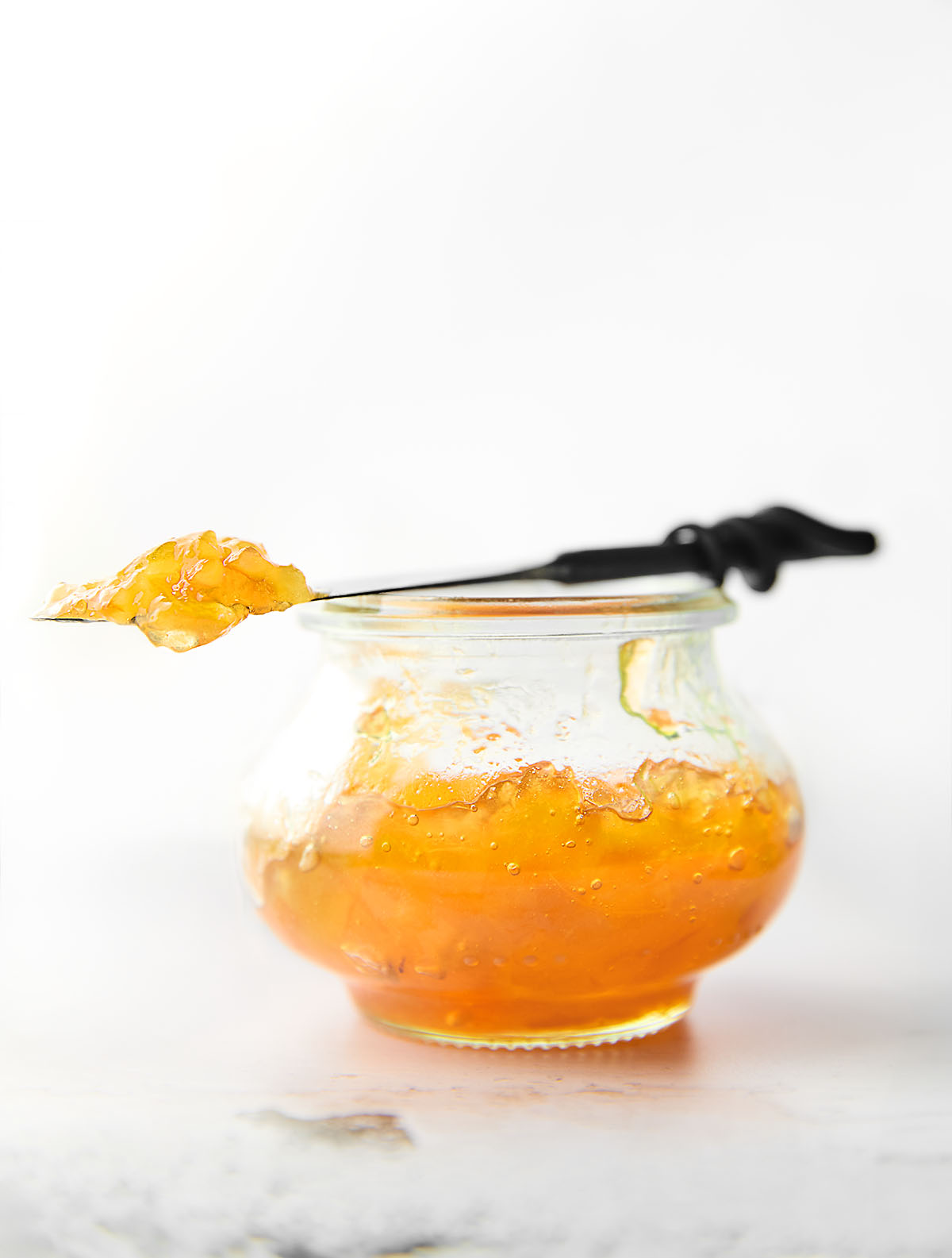
Jump To
- Why This Recipe Works
- What are Meyer Lemons?
- How Do They Differ from Regular Lemons?
- How to Tell if a Meyer Lemon Ripe
- Notes on Ingredients
- How to Make This Recipe
- Lemon Marmalade Questions Answered
- Pro Tips
- What to Serve with this Citrusy Marmalade?
- More Dreamy Meyer Lemon Recipes
- Write a Review
- Meyer Lemon Marmalade Recipe
- Recipe Testers’ Reviews
This post was updated Jan 22, 2025 to include new photos, steps, serving suggestions, tips, and answers to more questions.

Why This Recipe Works
This Meyer lemon marmalade is a winner because it balances the natural sweetness of Meyer lemons with their gentle acidity, creating a marmalade that’s bright and sweet with a touch of tartness. Blanching the sliced lemons removes any excess bitterness from the peel and pith, ensuring a mellow and balanced flavor. Adding both the juice and segments amps up the vibrant citrus flavor.
What are Meyer Lemons?
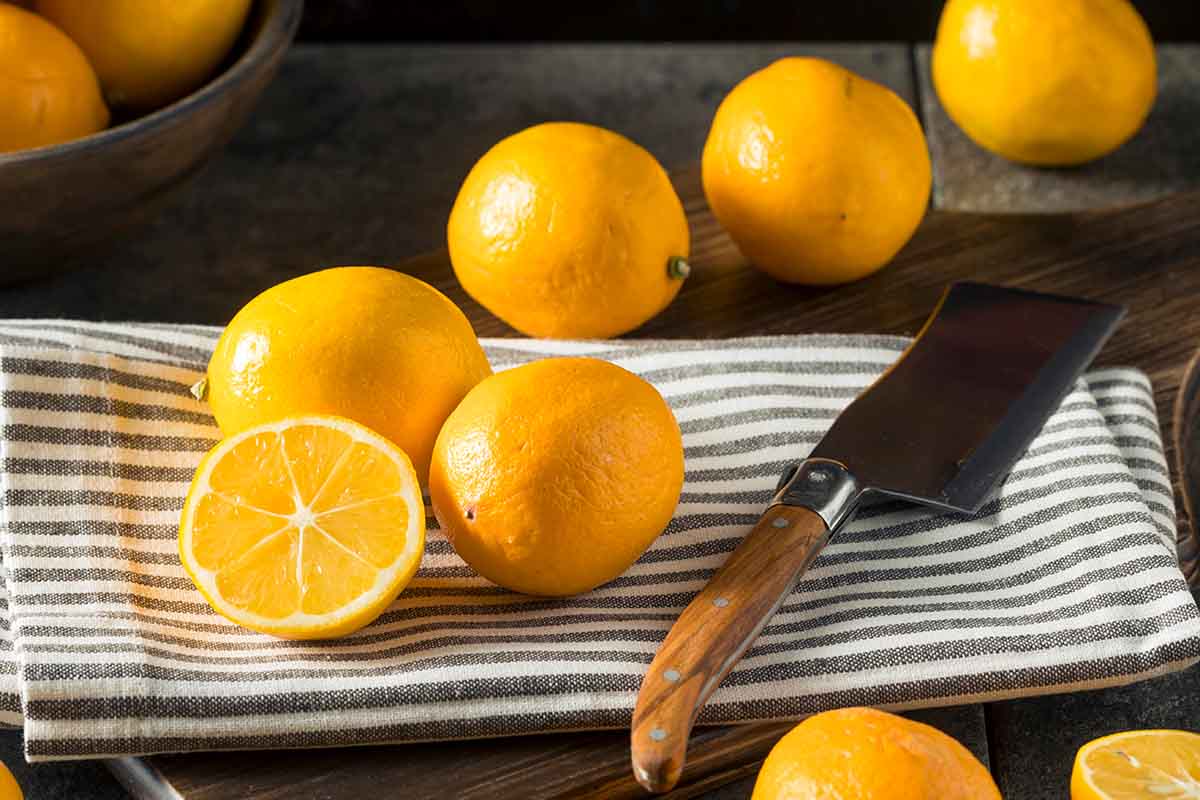
Meyer lemons are a unique variety of citrus fruit, thought to be a natural hybrid of a standard lemon and a mandarin orange. They’re sought after for their sweeter taste, floral aroma, and milder acidity.
How Do They Differ from Regular Lemons?
- Flavor: Meyer lemons are sweeter and less tart than regular lemons, with a subtle floral and herbal note, whereas regular lemons are sharp and tangy.
- Skin: Meyer lemons have a thinner, smoother skin that’s deep yellow with an orange hue. Regular lemons have thick, bright yellow, slightly bumpy skin.
- Juice: Meyer lemons yield more juice, and it’s slightly less acidic, making them ideal for recipes where a gentler citrus profile is desired.
- Seasonality: Meyer lemons are available in winter through early spring. Regular lemons, on the other hand, are available year-round.
How to Tell if a Meyer Lemon Ripe
Ripe Meyer lemons have a deep yellow to slightly orange hue and feel slightly soft when gently squeezed. The skin should be smooth and thin, and the fruit will emit a strong, fragrant citrus aroma. If it’s still pale yellow or firm, it’s not fully ripe yet.
Notes on Ingredients
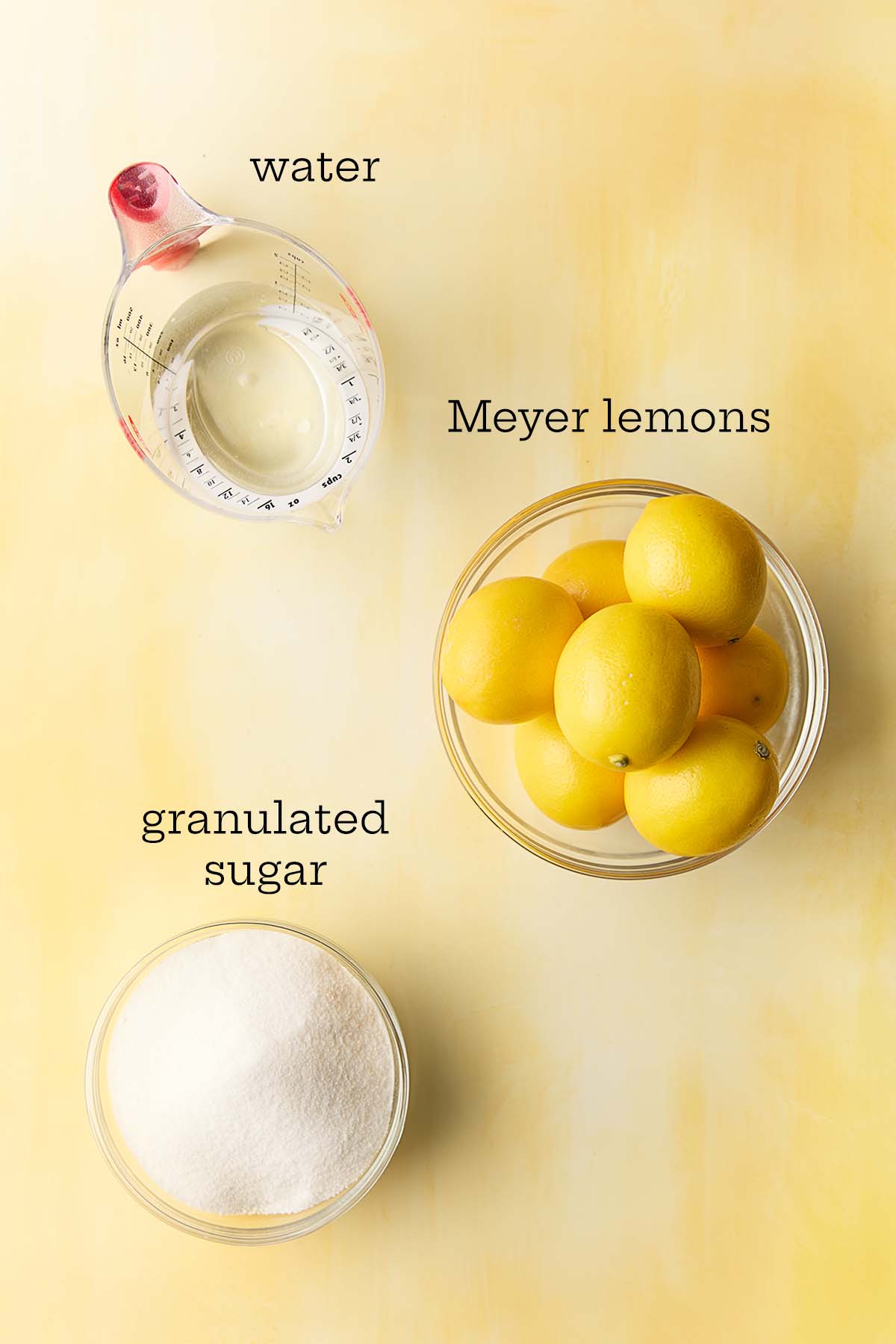
- Meyer Lemons—Their thin skin and mild pith make them perfect for marmalades, adding minimal bitterness. Since the peel is used, opt for organic Meyer lemons.
How to Make This Recipe
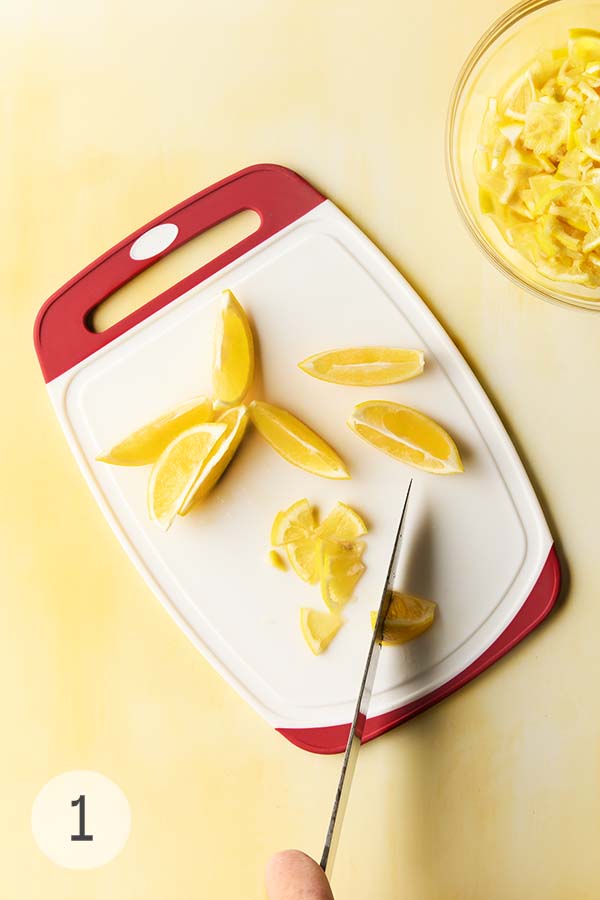
- Cut 4 lemons into eighths, flick out the seeds, and crosswise into thin slices.

- Remove the zest and pith from 2 lemons. Use the tip of a knife or a peeler.
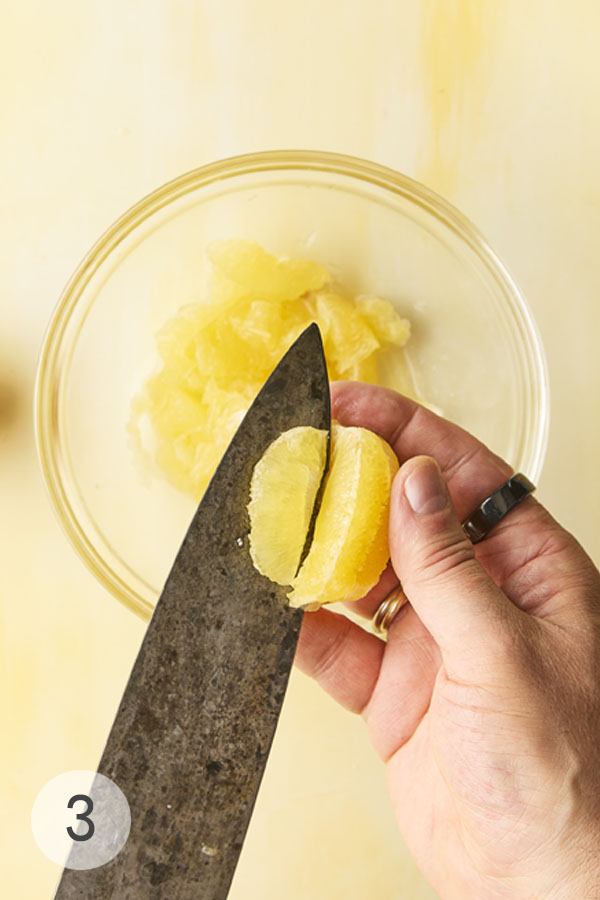
- Cut the segments free from the membrane and drop them into a bowl.
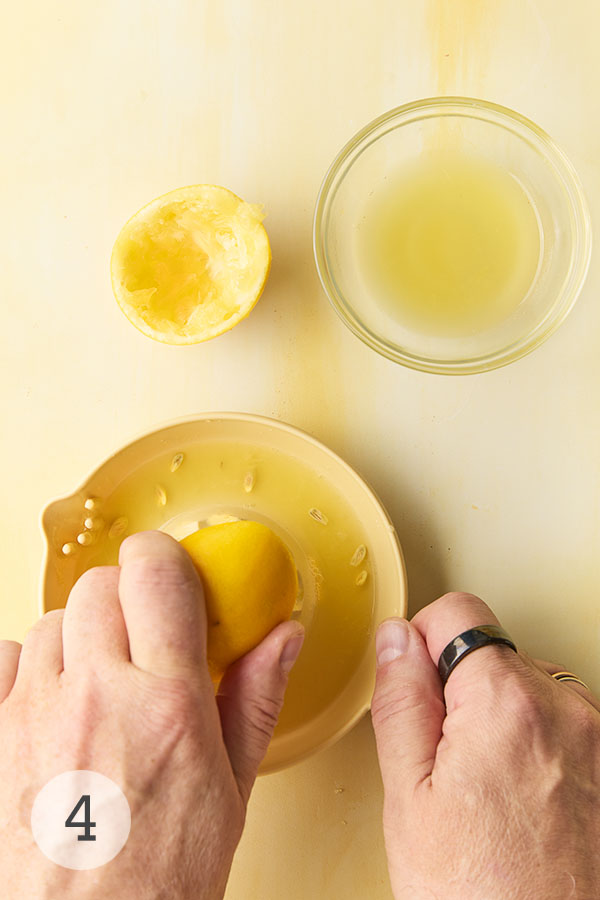
- Juice the remaining lemon to yield 1/4 cup.
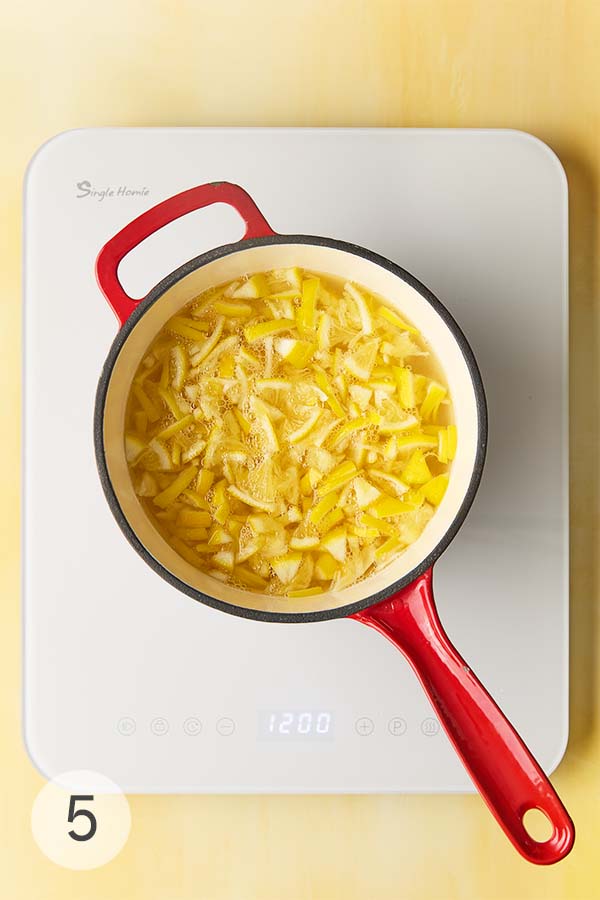
- Boil the lemon slices in water for 2 to 3 minutes to remove bitterness. Drain and pat dry.
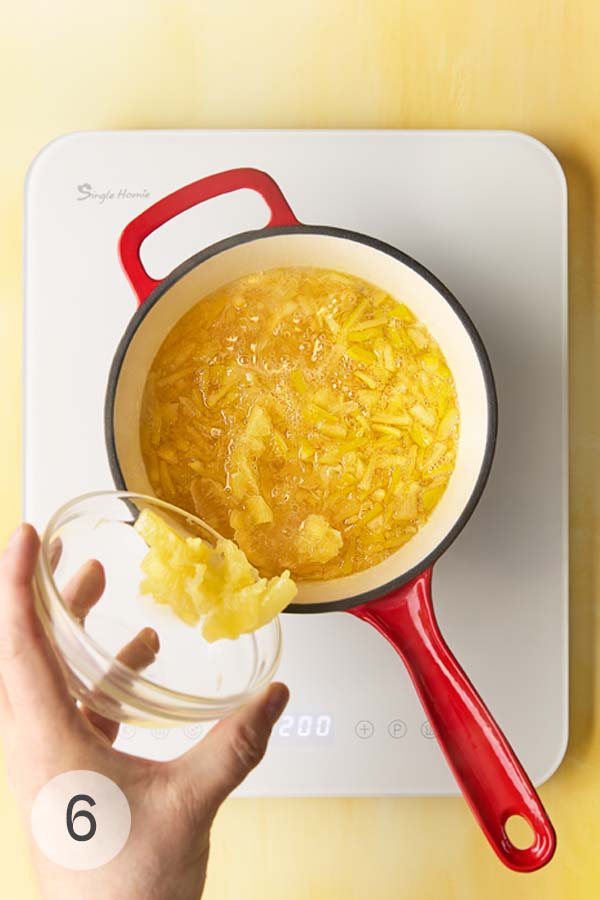
- Bring the water, sugar, lemon juice, slices, and segments to a boil.
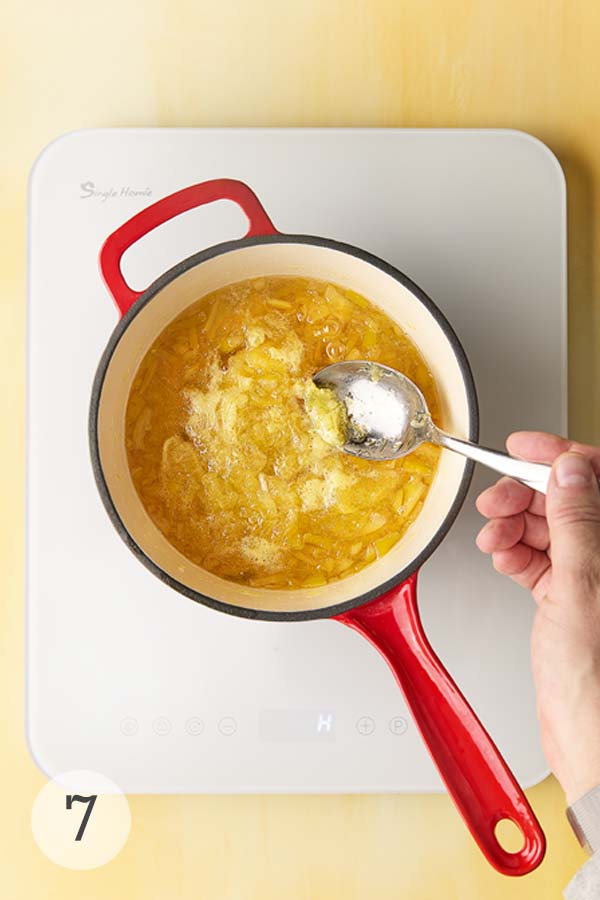
- Reduce to low, skim any foam from the surface, and simmer until thickens, 40 to 60 minutes.
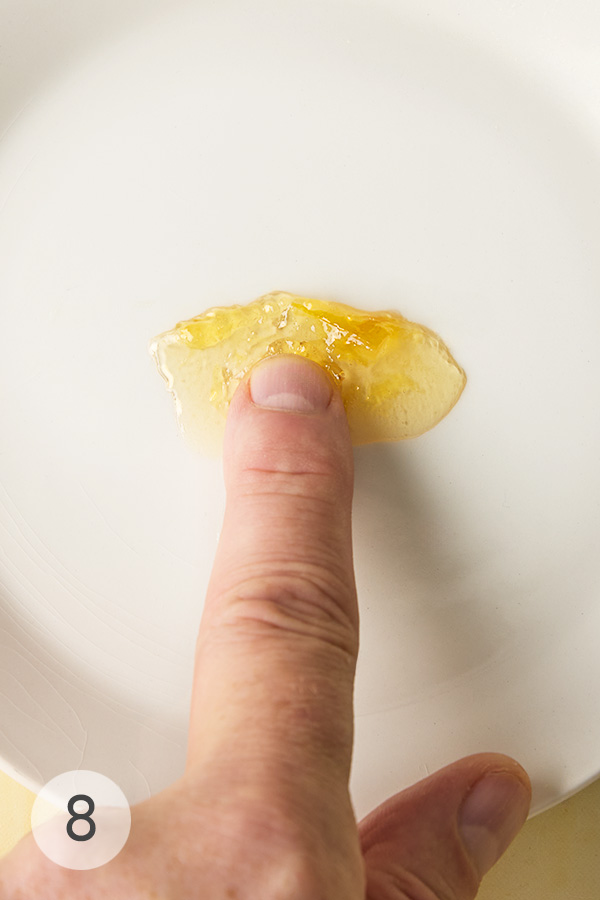
- Perform a Wrinkle Test. Drop a small spoonful of marmalade on a cold dish and let cool briefly. If it wrinkles when nudged, it’s done!
Lemon Marmalade Questions Answered
Absolutely! If you can’t find Meyer lemons, use equal amount of regular lemons and mandarin oranges. This combo mimics the sweet, floral notes of Meyer lemons while balancing the tartness of regular lemons. The flavor might be a bit more tart, but it’s still delicious.
Non-organic lemons are often coated in synthetic wax and loaded with synthetic pesticides, especially in the zest. Organic lemons are grown without synthetic pesticides or fertilizer, giving you pure, clean flavor—no chemicals, just bright, floral goodness.
Pro tip: Whenever zest is involved, go organic for the best results.
Tightly covered, it will last up to 2 weeks in the fridge.
Nope. Sorry. This marmalade recipe isn’t designed for canning. It’s a quick, small-batch recipe meant to live in your fridge, not on a pantry shelf. If you’re set on canning, use a recipe specifically tested for safe preservation.
Pro Tips
- Always zest Meyer lemons before cutting and juicing. Their thin, delicate skin is easier to zest when the fruit is whole, and you’ll get more of that floral, citrusy goodness in your recipe.
- Not confident in the cold plate wrinkle test? Here’s a foolproof way of getting your marmalade to set up properly: Use an instant-read thermometer. Cook your marmalade to between 217°F (103°C) and 220°F (105°C). A lower temp delivers a softer set, while a higher temperature gives you a firmer marmalade.
- For an irresistible texture, slice your lemons thinly and consistently–about 1/8-inch is perfect. This will help them cook evenly and melt into the marmalade.
What to Serve with this Citrusy Marmalade?
Oh, where to begin! For breakfast or brunch, spread it on toast, English muffins, or scones. Pair it with a creamy homemade yogurt or ricotta cheese. Its sweet and tangy flavor also complements savory dishes, making it a great addition to cheese plates, glazes for roasted meats, or even salad dressings. For “deserves,” as my grandmother called desserts, use it as a filling for pastries, a topping for ice cream, or a zippy addition to cocktails.
Write a Review
If you make this recipe, or any dish on LC, consider leaving a review, a star rating, and your best photo in the comments below. I love hearing from you.–David
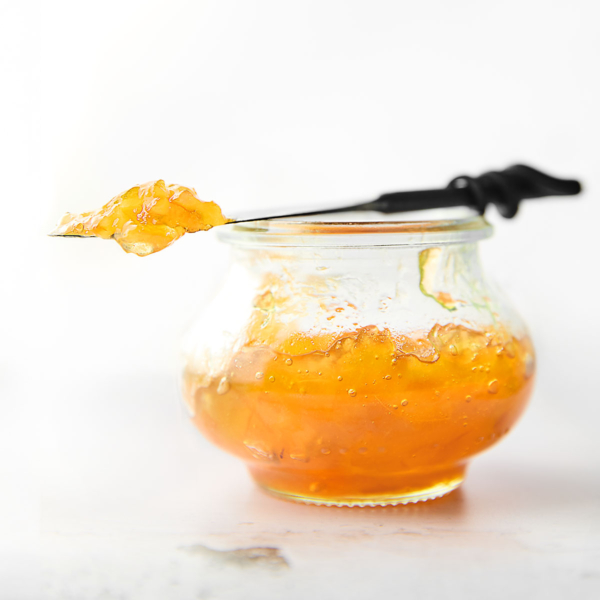
Meyer Lemon Marmalade
Ingredients
- 7 Meyer lemons, preferably organic
- 1 cup cold water
- 2 cups granulated sugar
Instructions
- Scrub the 7 Meyer lemons and trim the ends. Cut 4 of the lemons into eighths from tip to stem (yup, peel and pith and all), remove the seeds, and cut each wedge crosswise into very thin (⅛-inch thick) slices. Set aside.
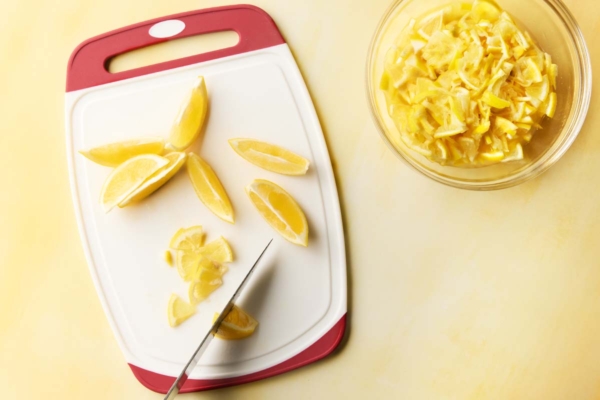
- Cut off the peel and pith from 2 of the remaining lemons.
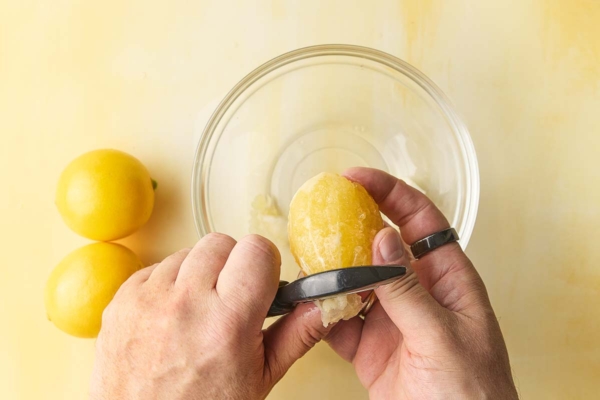
- Cup a peeled lemon in your hand over a small bowl and slice the segments free from the membranes, letting the segments and juice fall into the bowl and toss the membranes, peel, and pith.
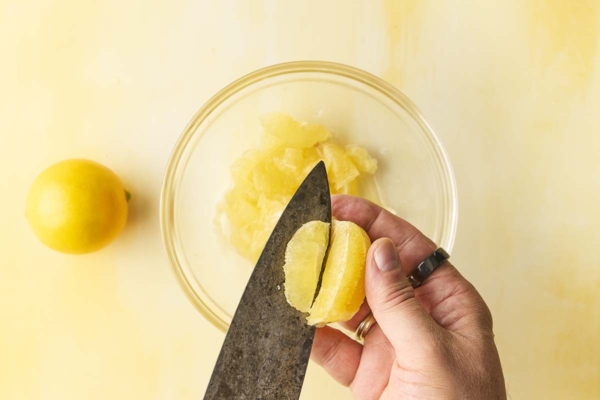
- Juice the remaining lemon. You should have about 1/4 cup juice.
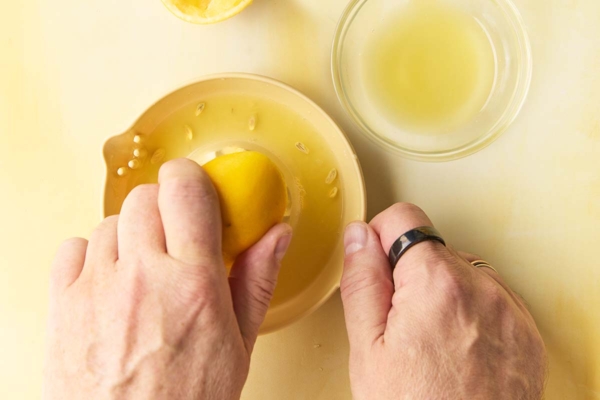
- Bring a small saucepan of water to a boil over medium-high heat. Add the sliced lemons, return to a boil, and cook to remove some of the bitterness, 2 to 3 minutes. Drain, pat dry, and set aside.
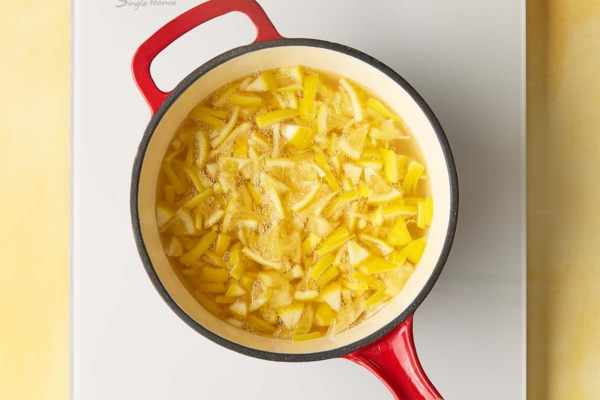
- In the same saucepan, bring the 1 cup cold water, 2 cups granulated sugar, and the ¼ cup lemon juice to a boil over medium-high heat, stirring until the sugar dissolves, 2 to 3 minutes.
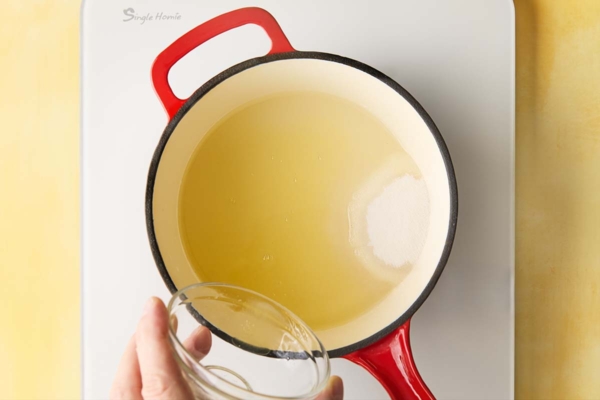
- Add the sliced lemons and the lemon segments and return to a boil.
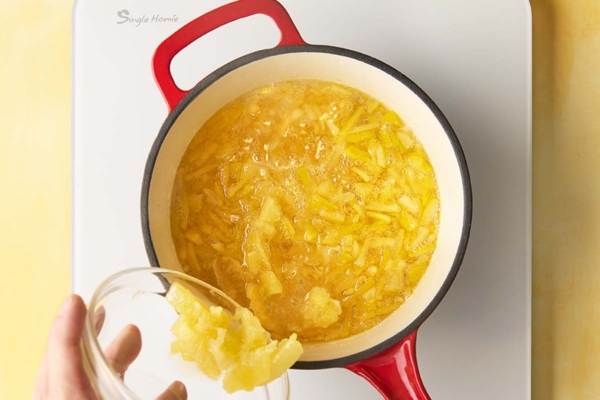
- Reduce the heat to low, skim any foam from the top, and simmer very gently until the mixture softens and thickens, 40 to 60 minutes, checking frequently to prevent scorching or overcooking.
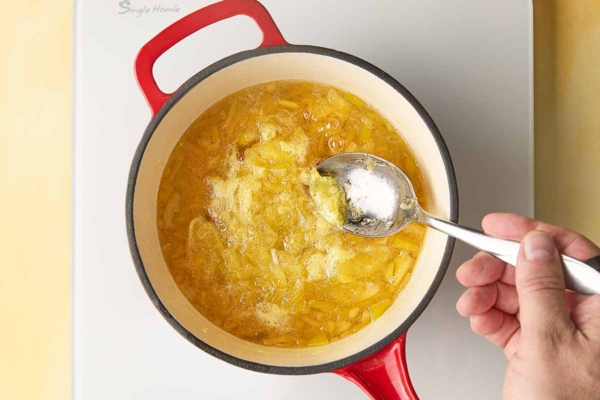
- To test for doneness, slip a small plate in the freezer for 10 minutes. Place a small spoonful of marmalade on the plate and let it cool for a minute or two. Gently nudge the marmalade with your fingertip. If it wrinkles or forms a skin that holds its shape, it's done. If it's still runny, continue simmering for a few more minutes and repeat the test.
☞ TESTER TIP:
Want a more precise test? Cook the marmalade until it reaches a temperature of 217-220°F (103-105°C). That's it.{/lc-tip]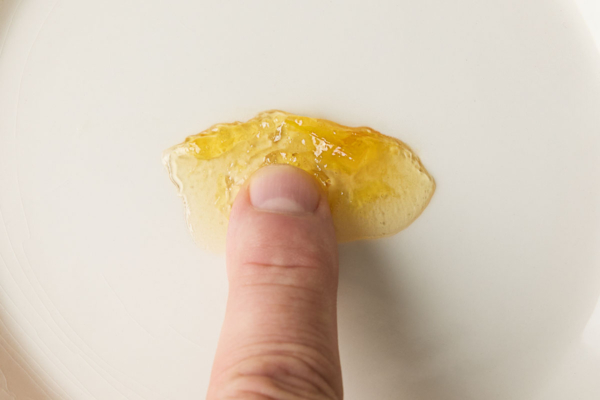
- Spoon the hot marmalade into heatproof jars, cool completely, cover, and refrigerate for up to 2 weeks. (Yeah, right!)
Notes
- Zesting—Always zest lemons before cutting and juicing. Their thin, delicate skin is easier to zest when the fruit is whole.
- Texture—For a smooth texture, slice your lemons thinly and evenly–about 1/8-inch is perfect.
- Testing—Cook the marmalade until it reaches between 217°F (103°C) and 220°F (105°C) on an instant-read thermometer. A lower temp delivers a softer set, while a higher temperature results in a firmer marmalade.

An LC Original
View More Original RecipesNutrition
Nutrition information is automatically calculated, so should only be used as an approximation.
Recipe Testers’ Reviews
I LOVE this Meyer lemon marmalade. The preparation is somewhat tedious and a bit messy but the end result is really quite stunning. It took me almost 45 minutes to prepare the lemons and another 45 to 50 minutes for simmering on the stove.
The marmalade isn’t only beautiful, it has an amazing lemon flavor. I’ll most certainly use this recipe for the special people in my life.
Sometimes, the more subtle things in life truly impact our perceptions and experiences. This simple but decadent Meyer lemon marmalade took me back immediately to dining experiences on the Amalfi Coast and, interestingly, in Normandy, France.
Simple to prepare and extremely forgiving, this recipe delivers marmalade to devour! I have visions of this marmalade on a variety of breads, paired with other ingredients, too, if desired: sprigs of mint, a drizzle of honey, a couple of fresh berries, to name a few.
I used 7 large lemons, which weighed about 2 1/3 pounds (along with the stated 1 cup of water and 2 cups of sugar), and yielded almost double the 1 1/2 cups stated.
I have two Meyer lemon trees in the backyard, with plenty of fruit still on them, so this was the perfect recipe to try out.
The outcome exceeded my expectations. Think yellow-colored orange marmalade, just a tiny bit more bitter. I tried it on bread with cottage cheese—just blew my mind.
The recipe is very well written; the hands-on and cooking times are pretty accurate. Yield is 2 cups instead of the stated 1 1/2 cups. I had to adjust the cooking time a little bit to 70 minutes instead of the stated 40 to 60 minutes.
I removed some of the white pith running inside the lemons when I cut them into slices, which wasn’t noted in the recipe.
All things considered, a lovely recipe, very worth the labor and time.
This marmalade isn’t just unique; it’s delicious. The preparation is a bit time-consuming, but it’s worth the time.
I halved the recipe because I purchased only 1 pound of lemons (which I now really regret.) I divided the lemon prep in proportion to the full recipe. The stated yield was correct, about 3/4 cup for the halved recipe.
I also adjusted the cooking time. One way to speed up the prep, if you have a good chef’s knife, is to line up three lemon wedges side by side and cut them crosswise into thin slices all at once. Beats doing them one by one.
It’s very important to watch the simmering mixture carefully, as it can easily scorch or overcook. If the marmalade thickens too much after it cools, a little water or a little more lemon juice and a few seconds in the microwave will help get it to a nice, spreadable consistency.
This marmalade was delicious on buttered toast with some slices of sharp Cheddar cheese.
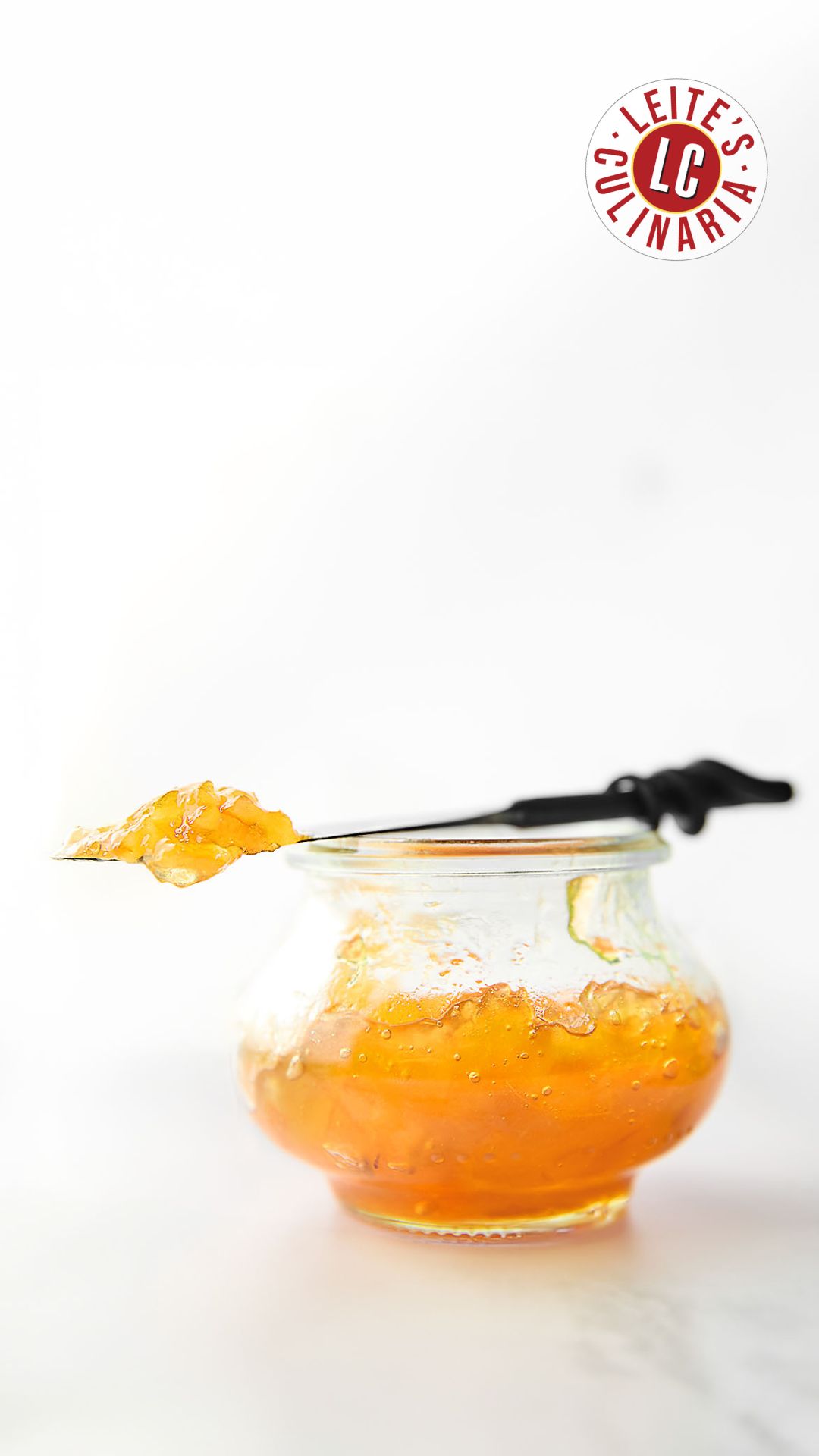
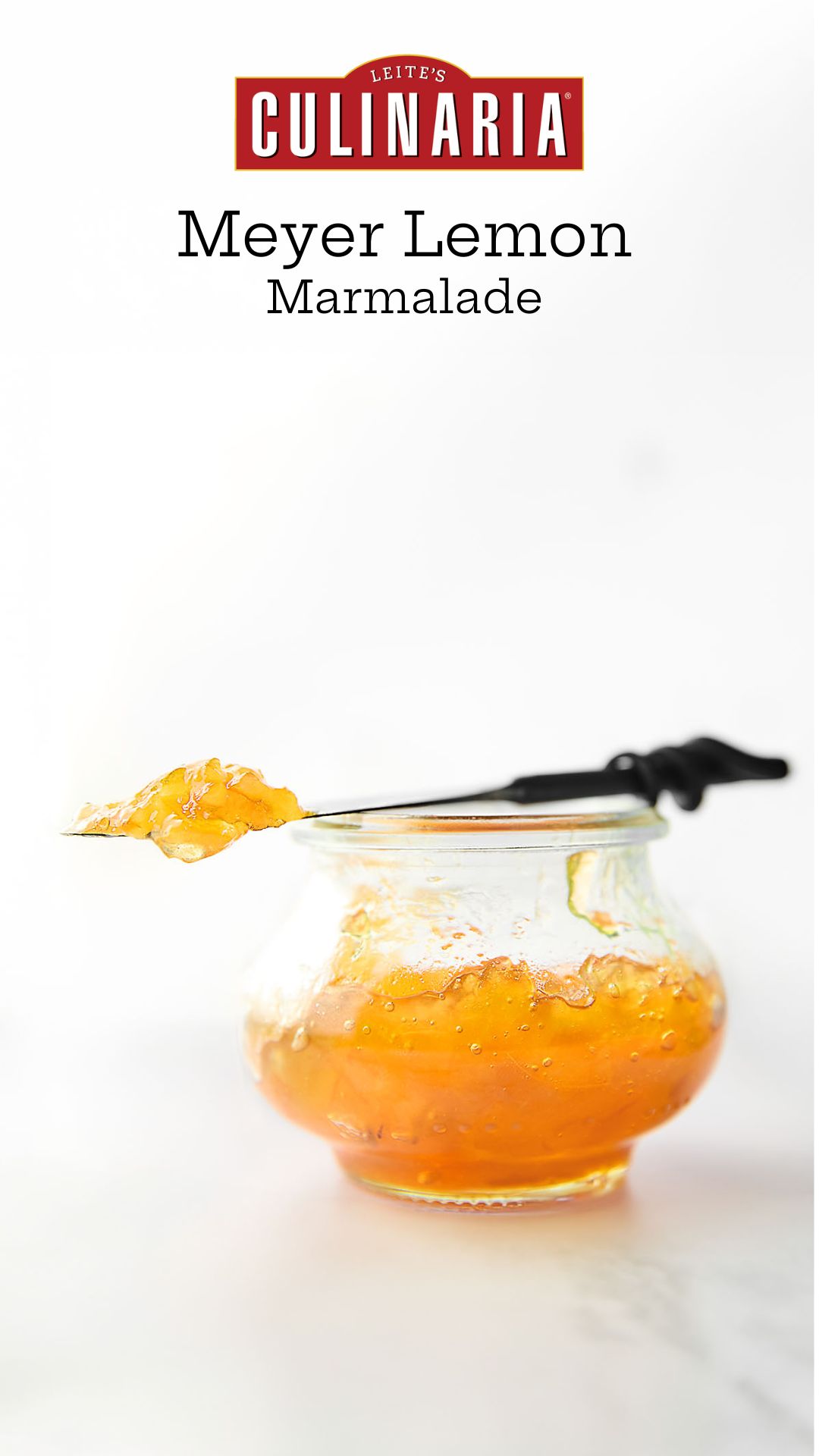
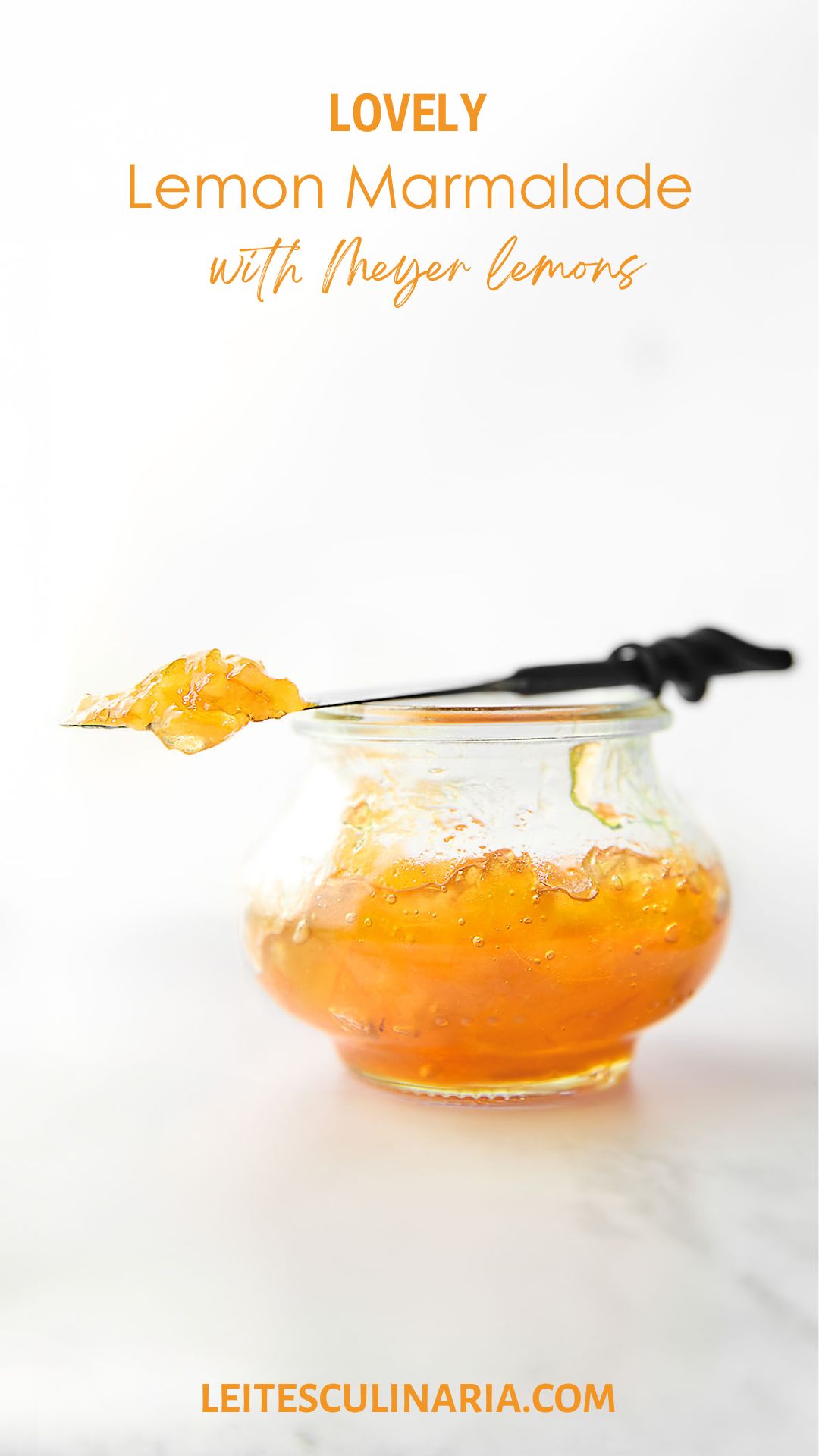
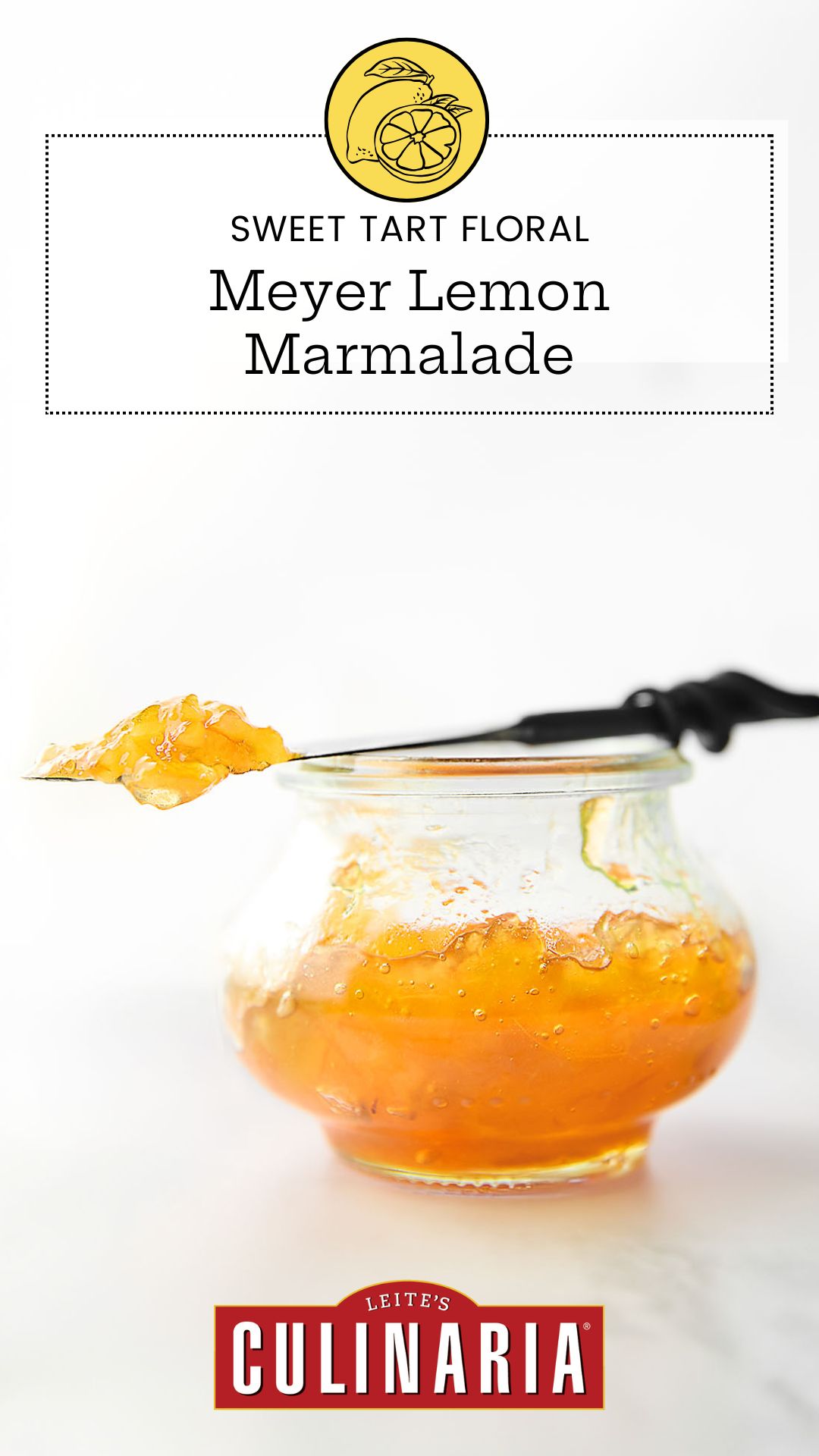
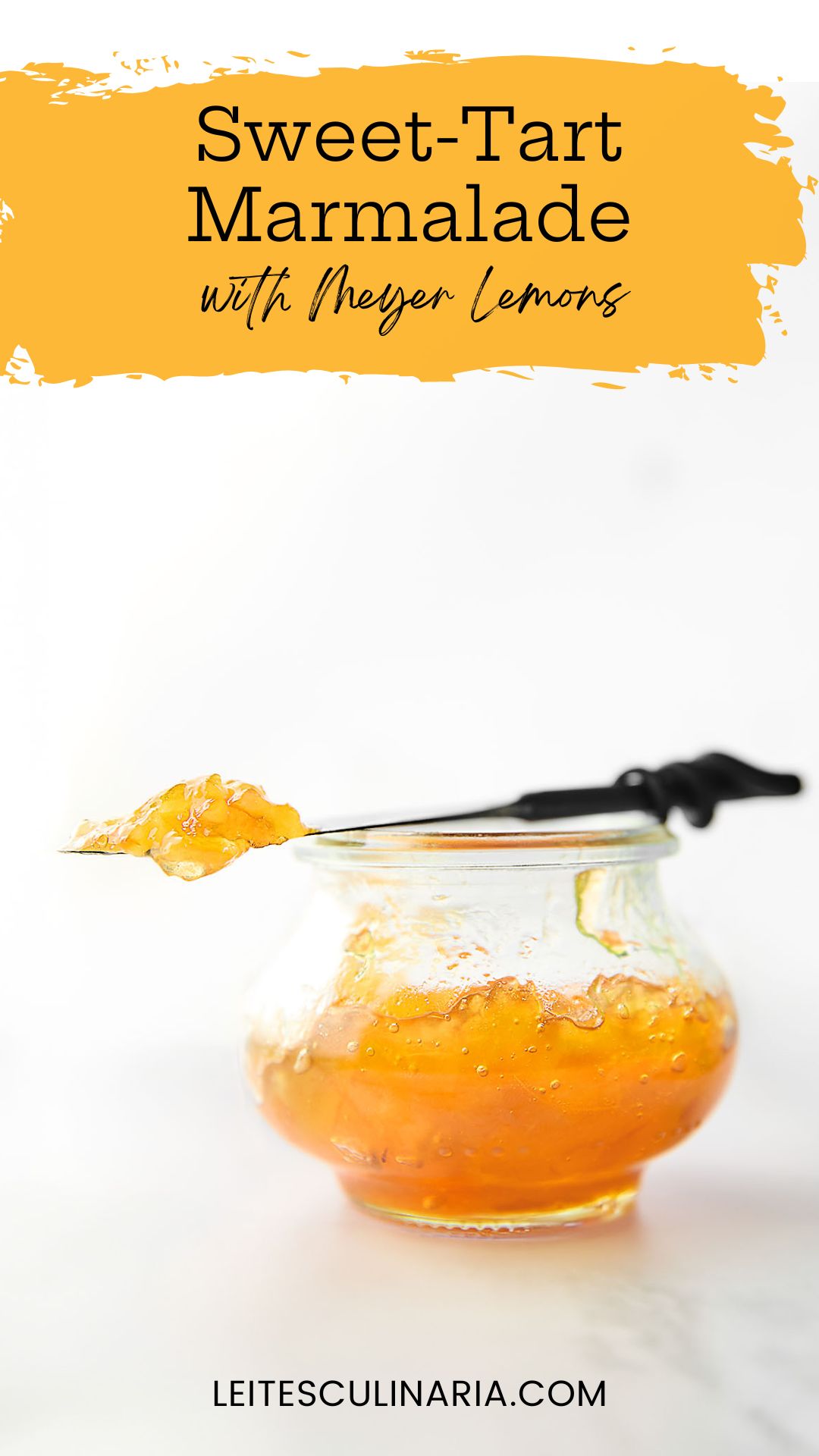
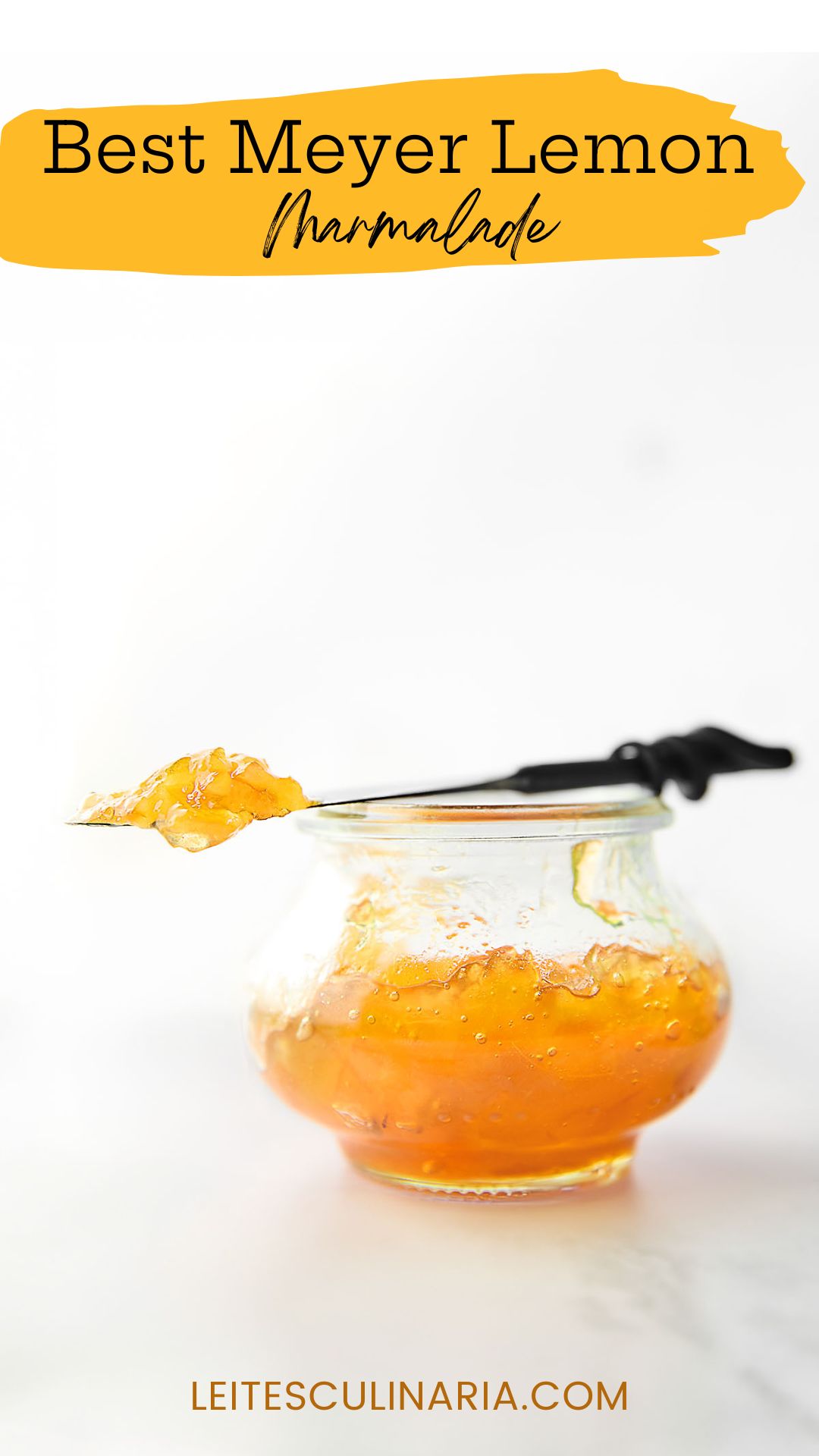
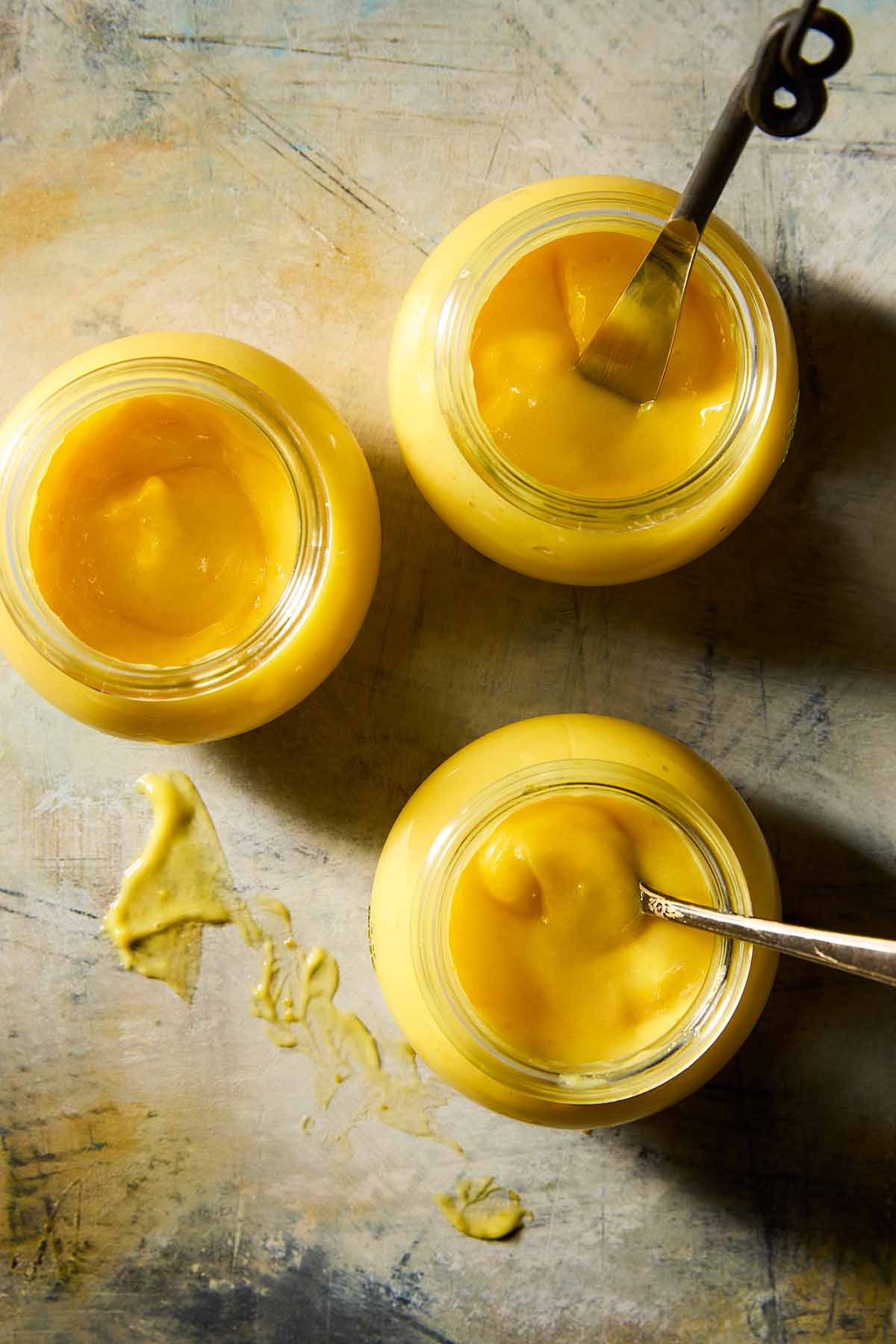
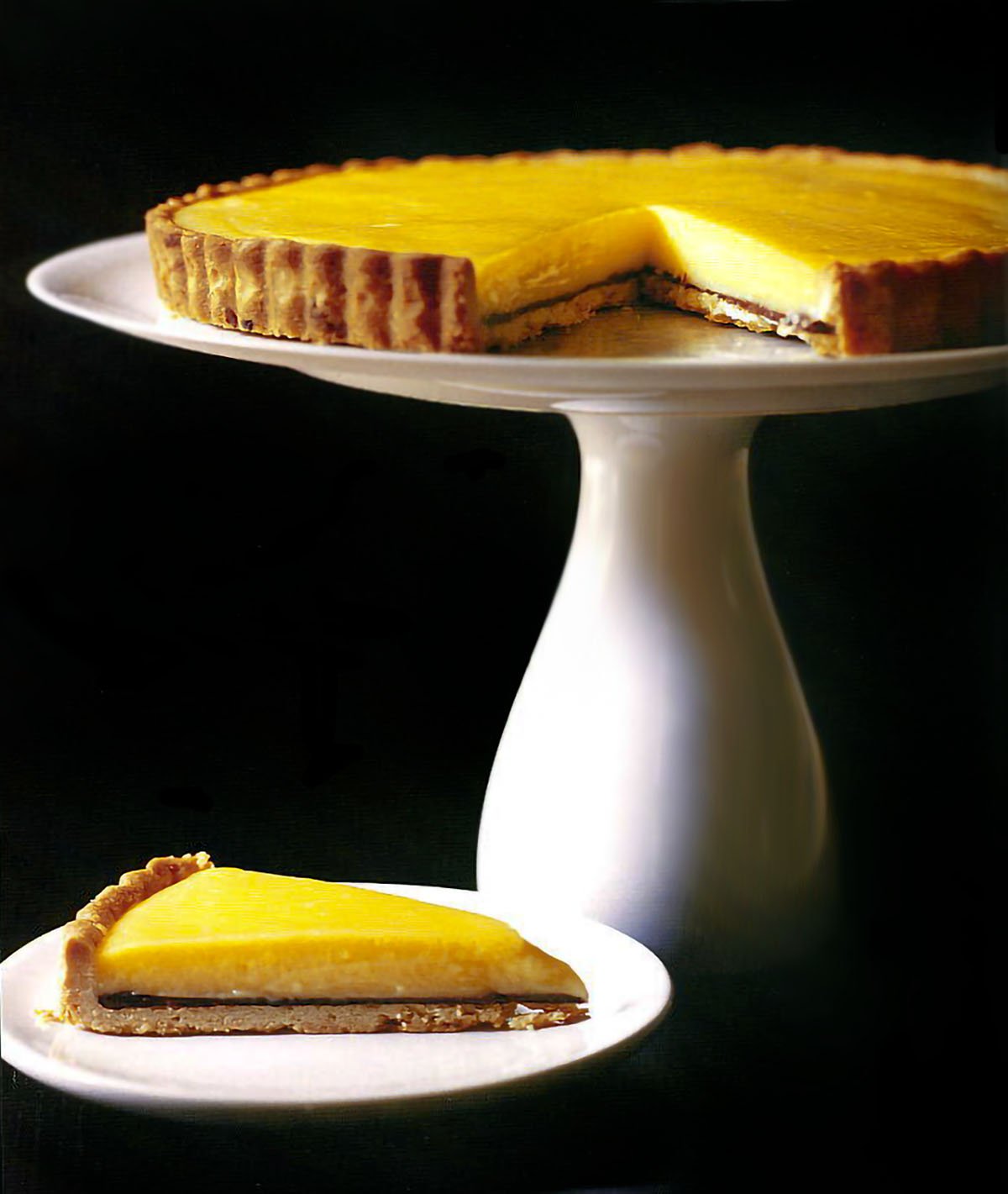












I had 1 pound of Meyer lemons in the fridge and an impending visit to my marmalade-loving dad. Figured I’d throw a half recipe of this together and hope for the best, though I’ve never had great success with marmalade making. Much to my delight, this turned out great. The half recipe made one half-pint jar. Will be making a full batch next time!
Angelene, magnificent to hear! First of all, I envy you the luxury of having had a pound of Meyer lemons—-that’s my kind of fridge contents! And I love that you’ll be returning to the recipe again and again for more. Many kind thanks for taking the time to let us know how well it worked for you…
This is such a wonderful recipe. The marmalade is a lovely clear, golden color. Slightly sticky, not too sweet or too tart – just perfect. I had 2 pounds of small lemons – about 12 – and it yielded about 3 1/2 cups of marmalade.
Thank you!
You’re so very welcome, Mary! Glad you love this marmalade as much as we do! Thank you so much for taking the time to let us know!
How easy is it to double or triple this recipe?
Thanks!
Jade, we didn’t test it that way, so we can’t say for sure. Cooking jams and marmalades requires precision. My suggestion is to make several single batches. That way you know the amounts, the timing, and procedure. Having said that, please look at the review of one of our testers Sue Davies. She said she had almost a double yield.
Thank you!
You bet, Jade.